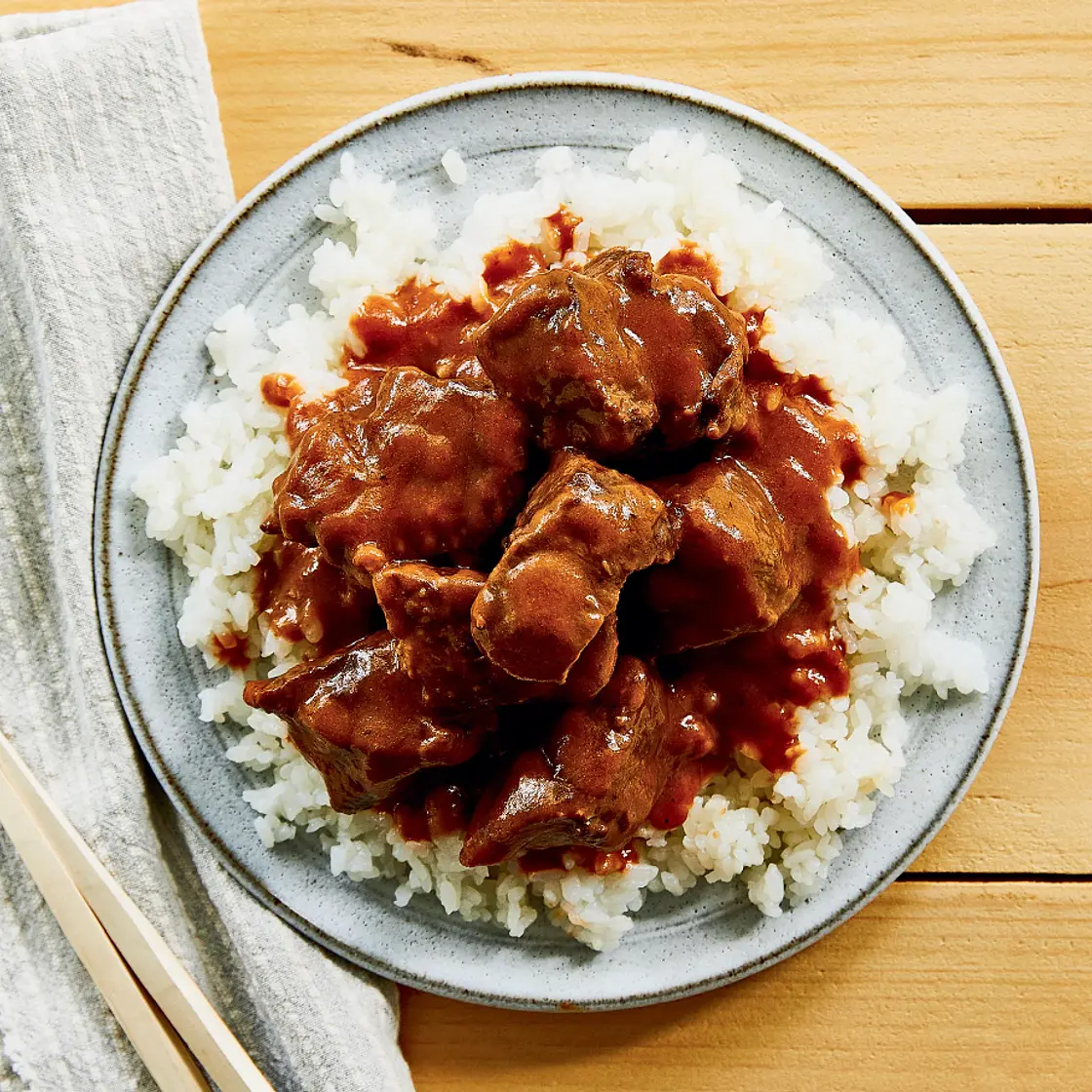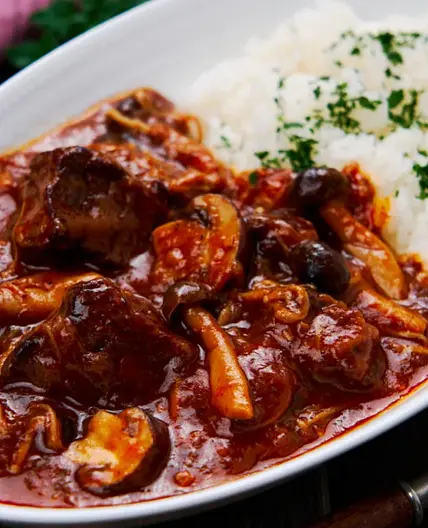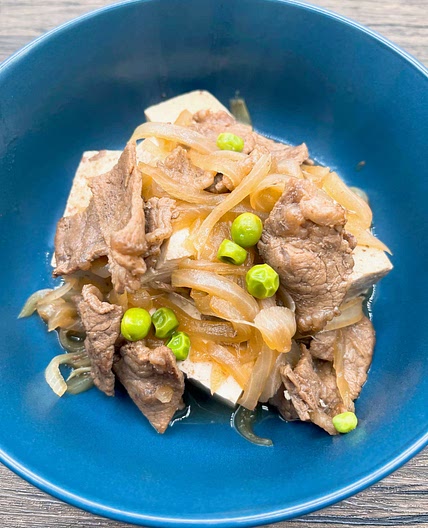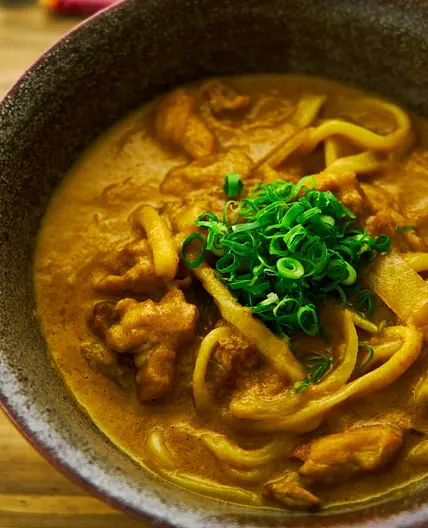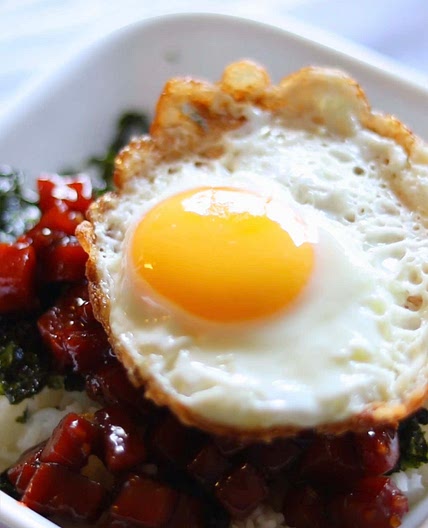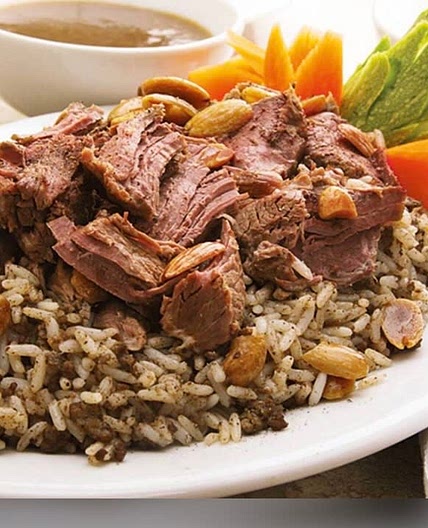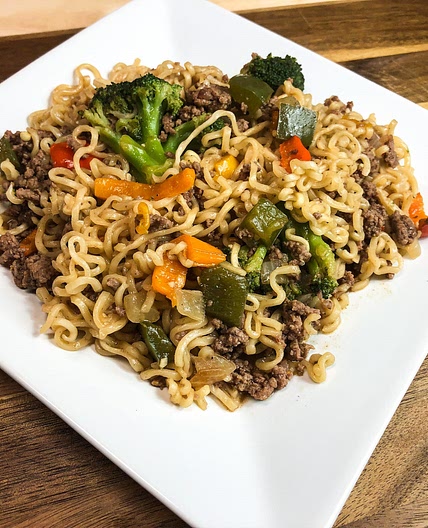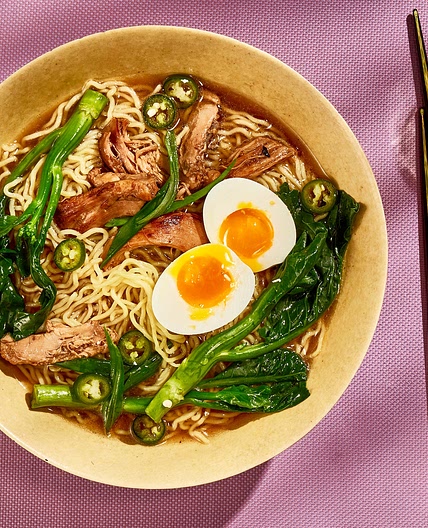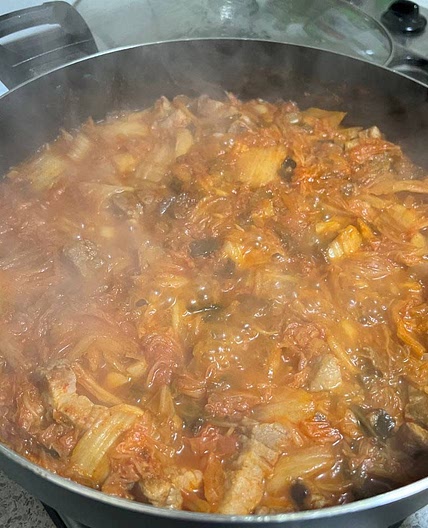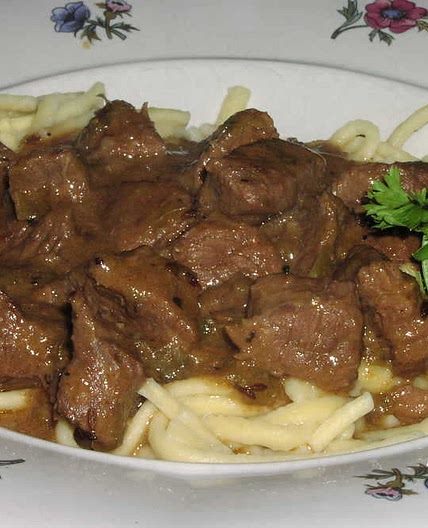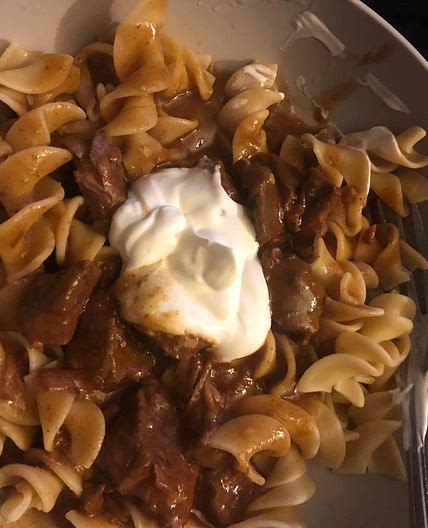By Chris Martin
Hayashi Rice
6 steps
Prep:20minCook:2h 45min
Hayashi is a straight-up beef stew in the tradition of old-school meaty braises like beef bourguignon, served over rice. To be honest, I was never a fan of beef stew when I was growing up. But once I had kids of my own and I discovered that sauce plus starch is a formula for getting them to eat dinner, my eyes opened to the utility and deliciousness of beef stew, specifically hayashi.
A classic hayashi rice is made the hard way, with a slowly reduced demi-glace and beef stock. My version is streamlined and dumbed down so it’s easy to make in big batches on the weekend and keep in the fridge or freezer for weeknight dinners. The provincial American in me wants to tell you that you can serve this over egg noodles instead of rice, if you like. Chris disagrees, but that’s because he didn’t grow up eating egg noodles. However, we both agree that you should pour leftover sauce over seared hamburger patties for another classic yoshoku dish: hambagu (hamburger steak).
Updated at: Thu, 31 Aug 2023 15:06:08 GMT
Nutrition balance score
Unbalanced
Glycemic Index
52
Low
Glycemic Load
11
Moderate
Nutrition per serving
Calories619.1 kcal (31%)
Total Fat39.6 g (57%)
Carbs21.7 g (8%)
Sugars9.2 g (10%)
Protein36.4 g (73%)
Sodium750.7 mg (38%)
Fiber0.8 g (3%)
% Daily Values based on a 2,000 calorie diet
Ingredients
5 servings
2 poundsboneless beef chuck roast
cut into 2-inch cubes
3 tablespoonsall-purpose flour
2 tablespoonsvegetable oil
or as needed
1onion
sliced thick
½ cupdry red wine
1 tablespoontomato paste
¾ cupdiced tomatoes
2 tablespoonsketchup
2 tablespoonstonkatsu sauce
1 teaspoonkosher salt
½ teaspoonfreshly ground black pepper
1 tablespoonhoney
For serving
Instructions
Step 1
Place the beef in a bowl. Sprinkle the flour over it and toss to coat.
Step 2
Heat a large, deep skillet or Dutch oven over medium-high heat, then coat with 1 tablespoon of the vegetable oil. Working in batches to avoid crowding the pan, brown the beef pieces thoroughly on all sides. Take your time and add more oil as needed. Crowding will cause the meat to steam rather than brown. Spend 15 to 20 minutes getting the pieces to a handsome shade of brown, transferring them to a plate or tray as they finish.
Step 3
If there’s a lot of fat in the pan, pour off all but about 1 tablespoon and return the pan to the stove. Add the onion and sauté until slightly softened, about 3 minutes. Add the wine to the pan and use a spatula to dislodge any browned bits from the bottom, then let the wine reduce until the pan is almost completely dry. Stir in the tomato paste and cook, stirring constantly, for 2 minutes.
Step 4
Return the meat and any accumulated juices to the pan and add the diced tomatoes, ketchup, Bull-Dog sauce, salt, pepper, and 1 cup water. Stir to combine and bring to a simmer, then drop the heat to low, cover, and cook for 1½ to 2 hours, until the meat is fork-tender. I like to give things a stir at the 30- and then the 60-minute mark, then check for doneness every 15 minutes thereafter.
Step 5
Use a slotted spoon or tongs to transfer the meat to a bowl or plate, doing your best to leave the tomatoes and onion behind. Add the honey to the pan and use a handheld blender to puree the vegetables and liquid into a smooth sauce. (If you don’t have a handheld blender, you can do this in batches in a regular blender, then return the sauce to the pan.) Once the sauce is smooth, stir the meat back in.
Step 6
You can serve the stew over steamed rice at this point, but if you let it cool and store it in the fridge, it’ll taste even better after a day or two. It will keep in the fridge for a week.
Notes
1 liked
0 disliked
Go-to
